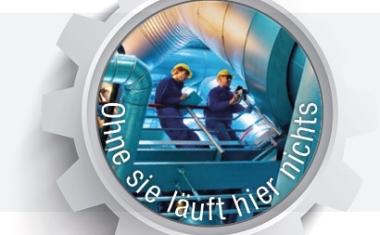Präzision. Leidenschaft. Geduld.
So, what are ‘the rose garden rules’ for predictive maintenance (PdM) in the chemical industry and how can they deliver a beautiful outcome?
- Patience: Prize winning roses do not grow quickly and there are not many quick wins in PdM. Hard work is required upfront, results don’t come immediately, so patience is required, and expectations must be managed.
- Precision: In your garden you would not put the same (expensive) flowers everywhere. In the same way it’s imperative to get the right balance between the business case and model complexity. Know how deep to go into modelling your equipment and how much is needed to show proof of value. That’s the key to choosing the right PdM strategy.
- Passion: To make your garden flourish you will have to invest yourself and be open to learn new things around soil etc. Also, in the case of PdM there will be a need to develop new skills, so look for staff who are capable of bridging maintenance, data and human dynamics.
- Hire A Gardener? You might not want to do everything in the garden yourself because of skill/cost and effect. So, you should consciously choose which skills you want to have in-house for PdM and use open-source for proof of value before selecting partners.
- Talk to the Flowers: This is about leveraging domain knowledge and empowering the people who possess that knowledge. Explore data availability, estimate business value and make sure everything is process driven and technology enabled. It’s people first, IT second.
Follow these rules and the strong business case you’ll develop will convince everyone to move forward to higher productivity, lower costs and lower capital employed.
The costs of predictive maintenance have dropped dramatically since it was first introduced into the chemical industry over 20 years ago. Sensors and data storage are now far cheaper, data is far more widely available, and connectivity and processing power are far greater. It all adds up to a powerful case that PdM will deliver real benefits for your production, maintenance and management teams. These include higher productivity through fewer unplanned breakdowns and interventions and an increase of OEE. Lower costs through better scheduling of planned activity, an increase in wrench time and less need for spare parts. And less capital employed through longer equipment lifetime and a reduced inventory of spare parts.
So why aren’t chemical companies making the most of this opportunity?
One of the biggest challenges is that unlike many industries, the chemical industry is not built on standard equipment. Each plant is designed for a particular chemical process, so it involves a lot of custom design. Scaling up is also more difficult because there aren’t identical machines at every site. That’s why proof of value is so vital because the business case can go in many different directions depending on the equipment involved – from highly standardized to completely custom-made and everywhere in between.
A profitable predictive maintenance journey has three phases
Phase 1: Explore your options. There is not one single type of predictive maintenance, there are different levels and that’s why it’s vital to classify your equipment first because this will help you identify whether it’s best to spend more time on a complex approach or a simple approach.
Phase 2: Answer the question “Make or Buy?” It’s a wide market and you have to select what’s right for you, how much you want to retain inside and how much you will rely on outside help. That’s why it is imperative to do a proof of value first which will help you decide the way to go. A lot of chemical companies are better suited to building their own Predictive Maintenance program rather than buying one in.
Phase 3: Industrializing your predictive maintenance, upscaling it across the initial site and then across other sites. Start with one site and just one area of that site. When you classify your equipment select the machines that provide the most benefit to you if you scale it across the sites and will therefore benefit most from PdM.
Predictive Maintenance is an ongoing program. You have to do maintenance every year. You can’t simply buy a ready-made PdM solution and implement it. You can only start, learn, improve and grow and grow. You should also avoid trying to optimize further and further. There is an optimal point beyond which the marginal benefit of further optimization no longer outweighs the costs.

Fig.: The journey from defining your predictive maintenance strategy to phasing it out.
Bring together your best and brightest
Predictive Maintenance is not simply an IT project. You have to integrate your process and maintenance teams with your data science skill and ensure that the project is process driven, not IT driven.
Your maintenance expertise is the most important factor and that needs to be translated into the IT solution. A Predictive Maintenance project is about enhancing human capabilities and not replacing them, so the human dynamics involved are critical.
You will also have to fight against the perception that Predictive Maintenance will make actual maintenance unnecessary. It’s called PdM as it still involves actual maintenance - just done smarter.
Efeso can help make your predictive maintenance journey simple and rewarding
Our focused, agile proof of value approach is the key to a successful partnership. It makes it easier for companies who are not quite sure where to begin and for companies where projects are getting stuck because they didn’t manage expectations.
To read the full article, please click here!
Authors: Erik Weytjens, Principal, Efeso Consulting, and Sebastian Grundstein, Head of the Analytics practice, ROI-Efeso












